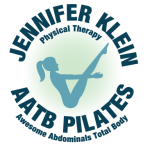In response to the high interest of athletes in the difference and benefits of identifying lactate threshold VO2 testing, I have provided the following excerpt from Daniel’s Running Formula, author Jack Daniels, PhD.
The determination of blood lactate accumulation became popular among athletes in the 80’s. The idea was to determine threshold training intensity using specific blood lactate value (4.0 millimoles of lactate acid per liter of blood came to be accepted as a desired threshold value.)
What is really being sought is an intensity of effort which can be identified as a specific running pace/threshold pace that will be associated with a constant blood lactate value. The constant blood lactate value is produced during a steady training run 20-30 minutes at a pace most runners can maintain for an hour in a race situation. For trained runners, this pace corresponds to about 88% of VO2 max or 90% maximum target heart rate. Two runners could be at their lactate threshold, one at a steady blood lactate concentration of 2.8, the other feeling the same degree of stress at BLa of 7.2. They both may be at their lactate threshold, even though actual lactate values differ (and neither is at 4.0 millimoles). To ask these runners to train at a BLa of 4.0 would be overworking the former and under working the latter, if the idea was to perform threshold training. It is much more valuable to use a given percentage of VO2 to calculate threshold pace, rather than try for a specific lactate value.

Recent Comments